As the sun came up beneath an overcast sky, we set off from Rabanal del Camino en route to Cruz de Ferro.
The track mostly followed the road, and at one point we heard an extraordinary noise, like the breathing of a mechanical dragon or perhaps an ancient Bolton and Watt steam engine. What appeared was a strange white mad-max-style vehicle driven by two blokes in hi-vis vests as the machine drove down the centre of the road applying bursts of paint to form the dashed white centre line. Then for several hundred metres, we could smell only the paint.
Behind came a slow van that stopped periodically to see how quickly the paint was drying. I tried to imagine the life of a Spanish council worker whose sole job was to just to watch paint drying. I hoped he was a budding philosopher, or perhaps a popular singer by night.
The rocks on the path interrupted my reverie and I was reminded of the one in my pocket, and thought solemnly about the Cruz de Ferro and what it meant for me.
There was a wooden cross at the entrance to Foncebadon – on it was a sign in four languages asking people not to place rocks on it. Perhaps some people have been mistaking it for the Cruz de Ferro.
At Foncebadon we stopped for eggs on toast and coffee – protein to sustain us for a long day.
The town was largely derelict aside from a couple of Albergues – one claiming to be a Druid Albergue. But its fortunes have been linked to the Camino since at least the C12th. It had its own pilgrim hospital, hospice and church built by the hermit Gaucelmo. The ruins of these are still visible as you leave the village. After shrinking to its last two inhabitants, Foncebadon is experiencing something of a revival thanks entirely to the resurgence of the Camino in recent years.
We walked on. At one point someone had strung a rope across the path with many smaller ropes dangling down like a giant fly curtain. I wryly thought they were trying to keep the flies from reaching the high country – it was more likely to discourage wayward cows.
At length, the Cruz de Ferro came into view. We were beaten by a large contingent of Italian cyclists, who spent their time noisily trying to take selfies or posing for group ‘victory’ shots. They carried on despite others trying to have a solemn moment.
The tradition of the rock dates back in history, and there are differing versions of how the ritual began. Essentially the idea is that you bring a rock from home, to symbolise the burden of your sins or your psychological burden. You would carry it on the Camino as a reminder of your purpose, and it would be your Camino burden. You would then place your rock or significant object at the foot of the cross to symbolise unburdening yourself from your past transgressions.
I took my chance during a lull, and said a short silent prayer (not the one scripted for the Martin Sheen movie). Placing the rock (my Camino burden) at Cruz de Ferro was a poignant and personal moment, and just as I had placed the rock, I had a tap on my shoulder and turned to find a grinning Italian cyclist wanting me to take his photo. With a Zen-like realisation, I knew that that too was a Camino lesson.
I resisted the urge to crush their phone beneath a large rock, then shrugged. It’s their Camino too, whatever meaning this place has for them. So I smiled and took their photo and wished them a ‘Buen Camino’ – and meant it.
The Camino is different for everyone and in a way I was grateful to be distracted from my burden – after all, hadn’t I just let it go at the foot of the cross?
It was a strange and slightly surreal moment, but I did feel lighter for it, and so for me, it was a timely reminder not to dwell on the past when there are people in the present who need me – if only to take their souvenir ‘selfie’.
The cross is said to have been erected on the site of a Roman altar to the god Mercury, or perhaps a place of early Celtic worship – no-one really knows. The iron cross was erected in the 11th century by Gaucelmo, who was the abbot and founder of the monastery at Foncebadon. The current cross is a replica of the original now held in the pilgrim’s museum at Astorga. Some say the cross may originally have been erected to mark the path in Winter when the snow is deep. Whatever its origin, it is today a place of contemplation and a chance for pilgrims to pause and look within themselves and consider the purpose of their own Camino.
A chapel dedicated to St James was built in the Holy Year of 1982. A pilgrim sat in its shade to take a moment of reflection, perhaps waiting for the Italian peleton to resume their ride.
I also took a look around and found that a human sundial had been erected – it wasn’t in my guide – but I thought it a good way for people to consider their place in time and space by making them the gnomon or shadow pointer in a large sundial.
There were instructions in English – although, with complete cloud cover and a heavy mist, it was difficult to get a proper shadow. The instructions stated:
-
Place you in the central rectangle, put your heels on the centre line and move you more to the north or south depending on the month. The respective times for each 12 months of the year are recorded in the central rectangle. Your shadow will indicate in this way the true solar time (H.S.V.) Look Fig 1.
-
To know the official time you should do the followin[sic] thing: add 1 hour in winter and 2 in summer. In addition, it is necessary to add the value of the equation M of the figure 2 (which is indicated in minutes).
We turned and continued on our way, taking in the breathtaking views before the descent. But perhaps that is enough for one post…
________________________________________
INDEX – If you wish to follow our journey from the start, or jump in to any of the Camino posts,
here is a link to the index page – also found in the navigation bar at the top of this blog
________________________________________
Why not have these posts delivered to your in-box? Just enter your email address and click the ‘subscribe button to your left, then respond to the confirmation email in your in-box 🙂



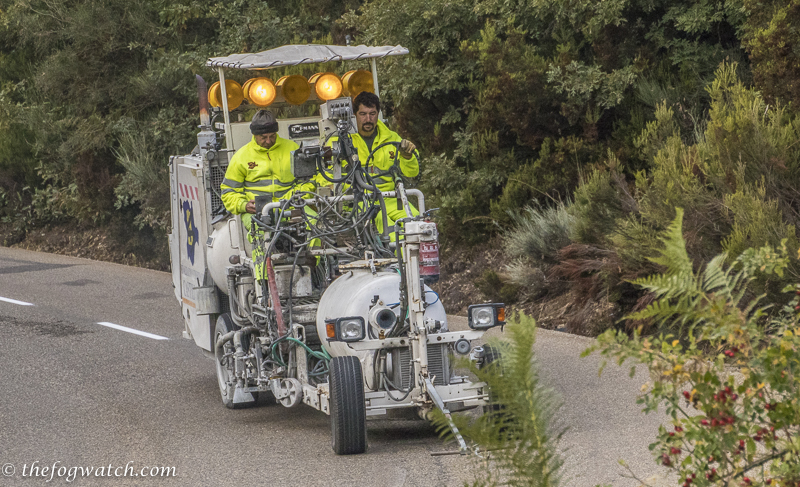

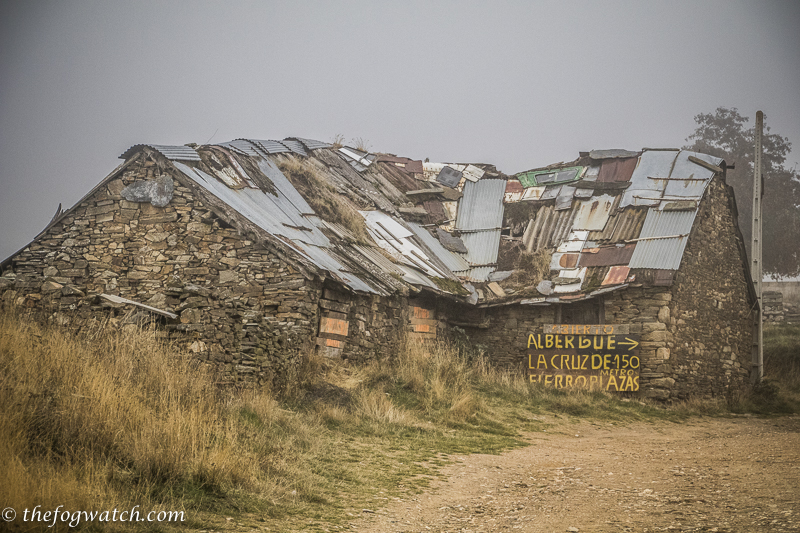
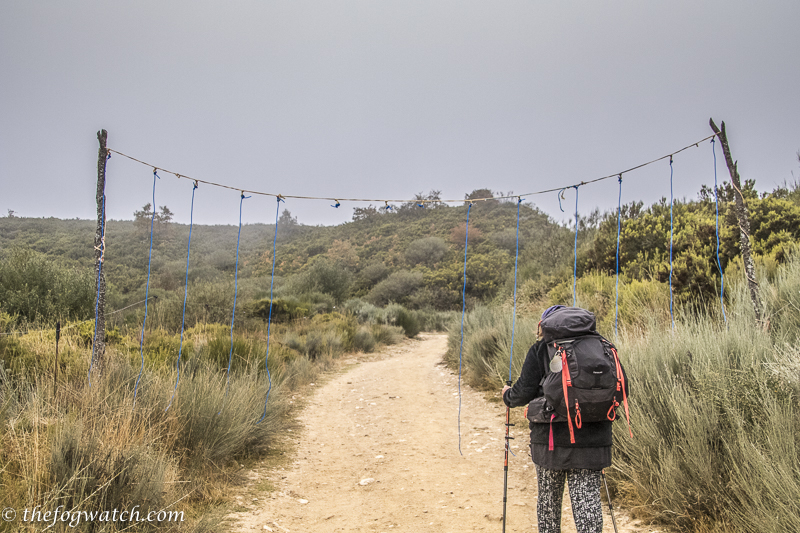
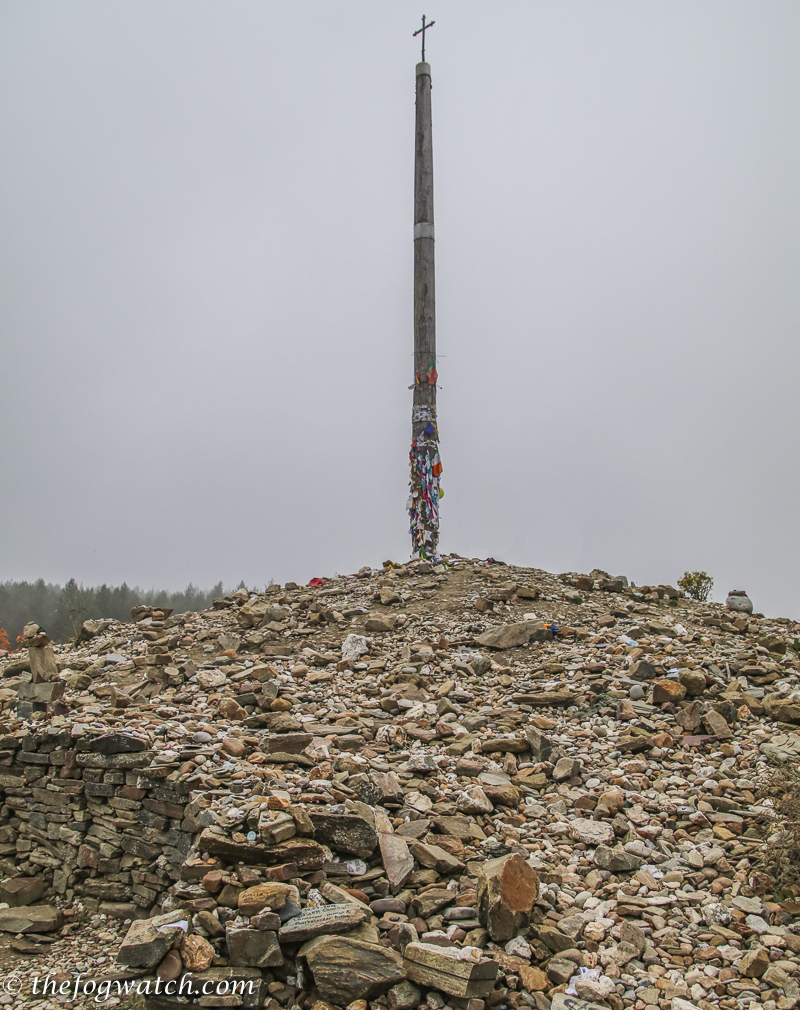
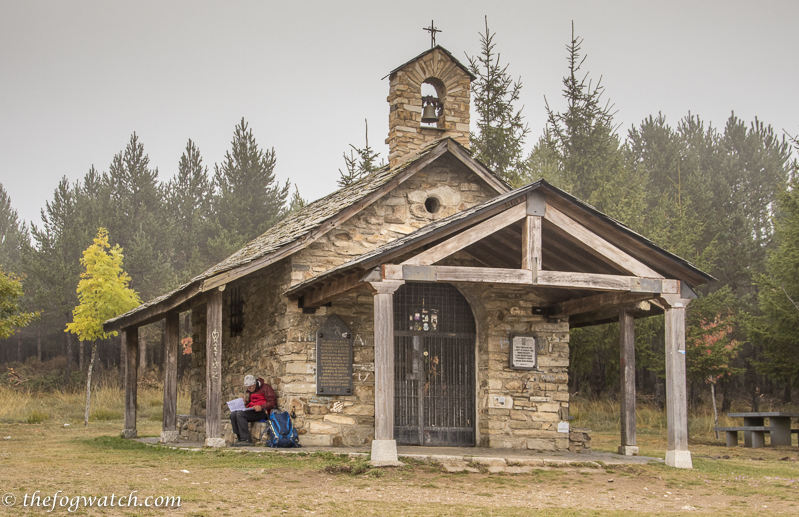
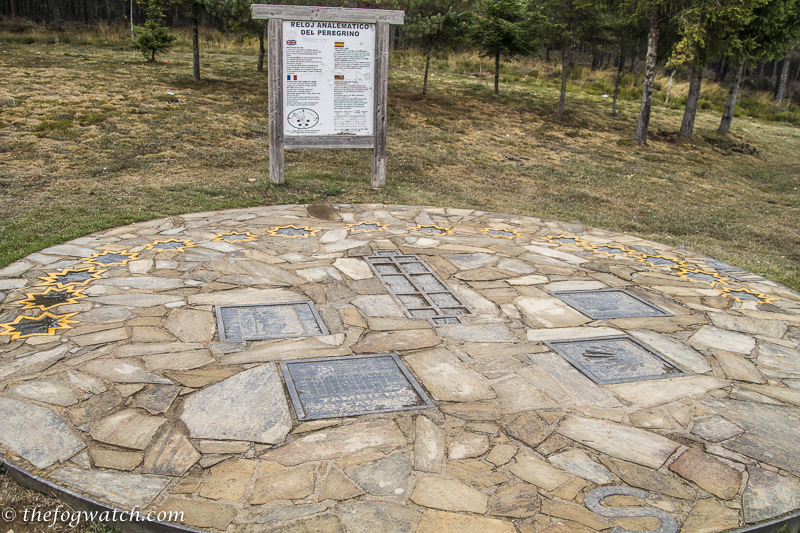
Hi Jerry, great post and photos. I hung on your words “for me, it was a timely reminder not to dwell on the past when there are people in the present who need me…” I think too often many of us tend to dwell on the past. The Camino Lesson for me after leaving the Cross was to direct my attention forward and live more in the present as there is a whole lot of living ahead that needs my attention more. Your words state that thought so beautifully.
The peleton and selfie story was very funny. 🙂
Thanks Kathy – yes it was an important lesson for me too – and one that continues to resonate with me. This was probably one of the (several) great high points – literally as well as metaphorically – for me 🙂